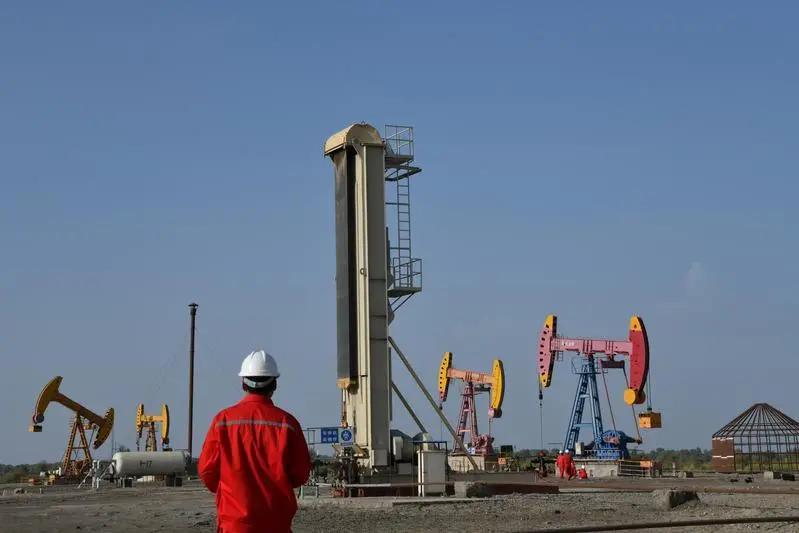PHOTO
(The opinions expressed here are those of the author, a columnist for Reuters.)
LAUNCESTON, Australia- Asia may be a late arrival to the impending crude oil party.
The oil market is largely convinced that a strong recovery in demand is imminent, based on the view that the world is recovering from the coronavirus pandemic and economies are rebounding.
Although this may be true for North America and Europe, the top oil-consuming region of Asia is looking somewhat less optimistic, with crude demand in top importers China and India presenting a mixed outlook.
China, the world's biggest crude buyer, looks set for another month of modest imports in May, as several refineries undergo scheduled maintenance.
India, Asia's second-biggest importer, also is on track to record a soft May import number, even before the impact of the current coronavirus wave on demand shows up in monthly purchases.
While these are both likely temporary factors, it does signal that the pick-up in Asia's crude oil demand may not be as rapid as what most analysts are expecting for the rest of the major consuming regions.
China's seaborne and pipeline crude imports for May are estimated at 43.3 million tonnes, equivalent to about 10.24 million barrels per day (bpd), according to Refinitiv Oil Research.
About 1.2 million bpd of refining capacity is offline in China in May, according to Refinitiv, with most scheduled to restart by the end of June.
This implies that China's crude oil demand may increase from June onwards, but there is still the likelihood that it will look soft when compared with the year earlier months.
This is because of the massive surge in China's imports as refiners gorged on cheap crude in the wake of the pandemic and a brief price war last April between top exporters Saudi Arabia and Russia.
This resulted in an estimated 1.29 million bpd of crude flowing into commercial and strategic stockpiles in 2020, a number derived from subtracting refinery throughput from the total volume of crude available from domestic output and imports.
A further question is whether China will keep stockpiling crude at anything close to 2020's elevated levels, with an estimated 1.16 million bpd being stored in the first three months of this year.
But that figure was boosted by an unusually high flow to storage tanks in March, which was a result of independent refiners using up their new 2021 import quotas at the start of the year, a factor that won't be repeated in coming months.
INDIA DEMAND HIT
Turning to India's current battle with the coronavirus, it's still uncertain as to how big the hit to demand will be, especially given that the wave of infections still has to be brought under control.
Analyst estimates vary, but it would appear that a loss of at least 500,000 bpd in May is likely, and this could extend into June depending on what measures are taken to control the latest coronavirus wave.
Given that crude imports are arranged about two months to six weeks ahead of delivery, this means that the impact of the coronavirus on India's purchases will only show up in June at the earliest, but more likely in subsequent months.
However, India is already looking soft, with Refinitiv estimating May's imports at 16.34 million tonnes, or about 3.85 million bpd, which would be down from April's 4.0 million bpd and 4.32 million bpd in March.
Asia's other two big importers, Japan and South Korea, are showing some recovery in imports, but are still yet to consistently reach the same levels that prevailed before the pandemic.
Another factor to consider for Asia's demand recovery is the rise in crude oil prices, which tend to have a greater impact on retail consumers, given lower overall wealth levels compared with the advanced economies of North America and Europe.
Brent crude futures were trading around $68.95 a barrel early in Asia on Monday, meaning they are up around 256% from the pandemic low closing price of $19.33 in March last year, and by 33% since the end of last year.
Such a price increase may lead to some retail demand destruction in Asia, but it also may deter China from adding to strategic and commercial stockpiles.
While Brent has been increasing in recent weeks, the price of physical crude in Asia has also been rising, but not at the same pace.
Dubai swaps for the second month DUBSGSWMc2 , which are derived from the physical prices assessed by S&P Global Platts, ended at $64.01 a barrel on May 14, a discount of $4.70 to the closing price of Brent futures.
Up until the end of February a discount of around $1 to $2 a barrel was more typical, suggesting that since then, the physical market for crude heading to Asia isn't quite as optimistic as the investor market that largely trades in instruments such as Brent futures.
Clyde Russell
(Editing by Gerry Doyle) ((clyde.russell@thomsonreuters.com)(+61 437 622 448)(Reuters Messaging: clyde.russell.thomsonreuters.com@reuters.net))












